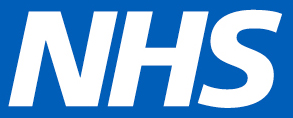Key themes emerging from general practice quality improvement initiatives to help tackle clinical capacity and patient access
By Alison Westmacott, Director of Primary Care, NHS South, Central and West CSU and Ian Razzell, Associate Director of Primary Care, NHS Arden & GEM CSU on behalf of the Commissioning Support Unit Collaboration
General practice continues to face significant challenges in the wake of the COVID-19 pandemic. Despite efforts to increase appointment availability, patients still report frustration when trying to access GP services, and many practice staff are at risk of burnout due to overwhelming workloads. These challenges are particularly pressing, as patients increasingly seek the timely, compassionate care they have come to expect, while practices struggle to meet demand.
The need to tackle these pressures is recognised in the Modern General Practice model, which aims to better align capacity with demand, improve the working environment for staff and improve patient experience. Implementation of the model has been supported by quality improvement initiatives such as the General Practice Improvement Programme (GPIP) - Practice Level Support (PLS), providing hands-on support to practices wanting to explore and implement opportunities to improve productivity, patient outcomes and staff wellbeing.
The CSU Collaboration – comprising NHS Arden & GEM, Midlands and Lancashire, North of England, and South, Central and West – is one of five PLS Delivery Partners. Within our delivery experience, the following themes have emerged which could help other practices identify opportunities to improve.
- Optimising appointment allocation for better patient access: Making sure patients see the most appropriate person for their needs impacts both patient access and clinical capacity and is one of the strongest themes that has emerged. Practices are typically finding approximately 30% of GP appointments could be seen by other clinicians within the practice, Primary Care Network (PCN) or beyond. Collating and analysing meaningful data enables patients to be signposted to the clinician best placed to support them, either within the practice or to other services based on clinical need, thereby reducing the burden on GPs.
- Embedding proactive care for frequent attenders: Frequent attenders often have complex needs that require a more structured approach to ensure they receive the right support while optimising general practice capacity. Typically, these are patients with significantly more consultations than average - often considered to be ten or more GP appointments per year or 20+ contacts across primary care. Some quality improvement initiatives focus on patients with 30+ or 50+ appointments annually, particularly those who could benefit from proactive management. Practices can vary the threshold they use based on size, patient demographics and local healthcare demand.
- Standardising processes to improve efficiency and quality: Practices may have good workflows in place which most people follow but if that approach isn’t common to everyone, it can mean others have to adapt their workflows to suit different individuals. This creates inefficiencies and can even lead to quality or safety issues. Identifying and tackling these clinical or administrative variations will enable a practice to embed consistent, repeatable processes that save time and enhance quality.
- Streamlining roles to enhance practice efficiency and staff satisfaction: Clear and defined job standards are crucial not only for improving operational efficiency but also for enhancing staff wellbeing. When team members have a clear understanding of their roles and responsibilities, it reduces confusion, avoids duplication and helps identify areas where workloads can be better distributed. This clarity fosters a sense of ownership and accountability, which in turn contributes to greater job satisfaction and reduced stress. By clarifying job standards, practices can create an environment where staff feel more supported, engaged and confident in their work. This leads to a reduction in burnout and a more resilient, productive team overall.
- Predicting and preparing for patient demand: A key challenge in managing the so-called ‘8 am rush’ is in not knowing what to expect. By using retrospective data, often from cloud-based telephony systems, practices can profile expected demand and match capacity based on intelligence about the needs of the population. Using telephony data to identify peak demand by time and day and establishing the bottlenecks where abandoned call numbers are high can inform revisions in schedules and rotas to support the incoming demand.
- Mapping workflows to identify improvement opportunities: Mapping processes have proven to be enlightening for many of the supported practices and is a tool used frequently. This technique can be applied to all types of workflow, supporting teams to understand how different processes interrelate and highlighting opportunities for improvement. As a quality improvement tool, regularly reviewing and reassessing workflows and working methods can help practices adopt continuous improvement approaches in response to changing requirements.
Commitment today for resilience tomorrow
Any quality improvement activity needs time input to reap the full benefits. This can often prove a barrier to take-up as many practices are already overstretched. But in our experience, the short-term pain of that time investment pays back quickly by enabling practices to overcome persistent challenges, implement new ways of working, strengthen workplace satisfaction and provide a more responsive service to patients.
“The immediate benefits aren’t always clear to staff as it can feel like additional workload, but carving out three to four hours each week has made it really beneficial. It’s helped bring the team together and we’ve been able to deliver quite a lot of quick wins.” Jade Greet, Chillington Practice Manager
By committing to structured quality improvement programmes, practices not only enhance their immediate capacity to meet patient needs but also lay the groundwork for a more sustainable, resilient healthcare system in the future. The commitment of time and effort today ensures better patient care and stronger teams tomorrow.
Read the full article on the Healthcare Leader website, including examples from South Wigston Health Centre in Leicestershire and Chillington Health Centre in south Devon.










